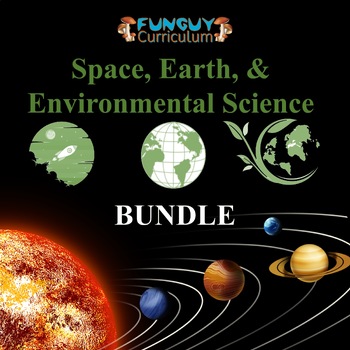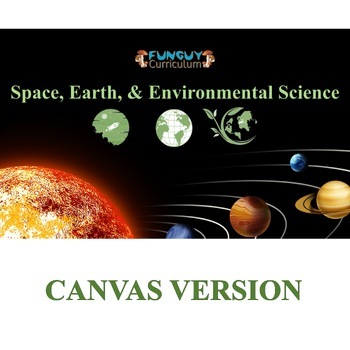Funguy Curriculum—Space, Earth, and Environmental Science Bundle
- Google Drive™ folder

What educators are saying
Products in this Bundle (2)
Description
Funguy Curriculum—Space, Earth, and Environmental Science (also known as just Environmental Science in some school districts) is a perfect resource for teachers who are new to this subject and even veteran teachers who want to simplify lesson planning. This full-year, complete science curriculum is geared toward non-honors students who need an additional high school science credit. The Funguy Curriculum—Space, Earth, and Environmental Science—Teacher Pages includes the teaching resources you will need, including NGSS standards, list of materials needed, and lesson plans (each with a bell ringer, warm-up, PowerPoints slides, activity, and answer keys), reviews, study guides, and assessments, listed sequentially. Links to PowerPoint presentations on Google Drive are included in each lesson (requires a Gmail account). The student pages for printing and handing out are found listed sequentially in the document labeled Funguy Curriculum—Space, Earth, and Environmental Science—Student Pages.
The Funguy Curriculum—Space, Earth, and Environmental Science Canvas Module includes lessons (each with video links, warm-up, PowerPoints slides, and assignment), reviews, study guides, and assessments, listed sequentially. Links to PowerPoint presentations on Google Drive are included in each lesson (requires a Gmail account). Many assignments and all assessments are self-grading, however, some assignments and labs will need to be graded by the teacher.




